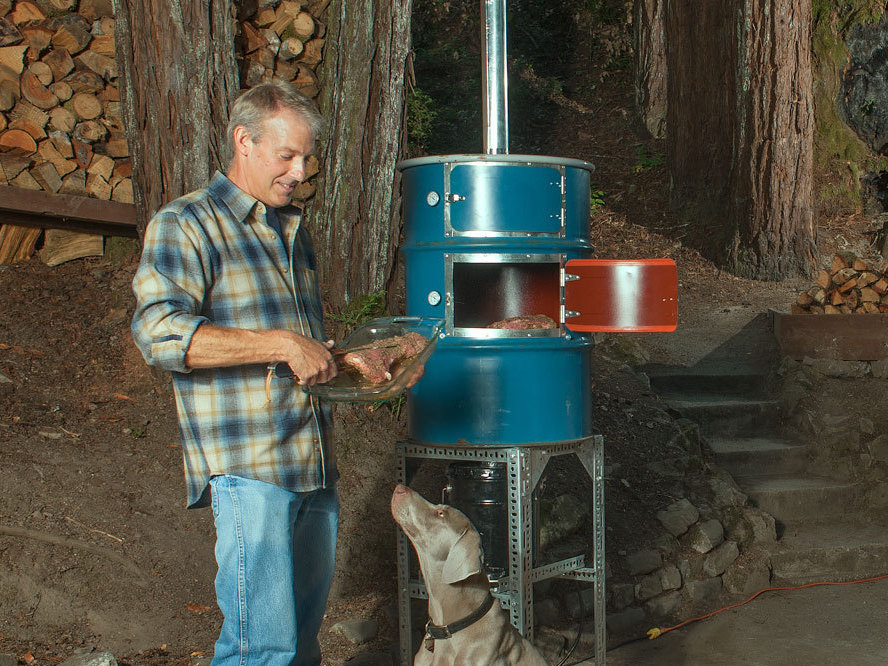Conclusion
Smoke 'Em if You Got 'Em
Why Smoke?
Exposing foods such as meat, cheese, and fish to wood smoke is desirable for a few reasons. Wood smoke adds wonderful flavors, from sweet caramel notes to spicy, smoky, and even vanilla aromas. Smoking also dehydrates foods to some degree, changing the texture and making them saltier and savorier.
Finally, wood smoke contains antioxidant and antimicrobial compounds that slow the rates at which fats turn rancid and bacteria multiply, so smoking helps preserve foods.
Consult one of the many excellent cookbooks that address safe food preparation prior to smoking. It’s imperative that you use the correct techniques to prepare your smoked food.
Hot Versus Cold
There are 2 main categories of smoking: hot and cold. In hot smoking, the smoke heats the food to about 126°F–176°F. Some hot-smoked foods, such as fish, may cook fully in the smoker. Other foods, such as red meat, should be pre-cooked. Consult a cookbook for details on safely preparing meats.
Since cold smoking (68°F–86°F) does not cook food, cold-smoked foods must be cured or cooked before being eaten.
So why cold-smoke at all? Cold-smoked meats and fish are moister and often more flavorful. The choice of hot or cold smoking depends on the item being smoked, how the chef wants the food to taste, and the equipment and time available.
Fuel and Temperature Control
Mound wood chips or sawdust in a shallow steel pan about 10" in diameter, so they make a cone-shaped pile. Place the pan on the electric hotplate. Adjust the heat on the hotplate so the chips smolder but don’t burn with a flame. When the chips are used up and the smoke becomes thin, add more chips.
The temperature inside the smoke chamber is the critical variable in successful smoke cooking. This is controlled by the length of the duct between the firebox and smoke chamber, the heat of the firebox, and the ambient air temperature. Choose cool days for cold smoking and warm days for hot smoking. Try adding a little charcoal to the pan to sustain warmer temperatures.
Adjust the smoke levels by opening or closing the louver on the bottom of the firebox to let in more or less air. This will speed up or slow down smoke production.
Good woods to use for smoking are hardwoods such as hickory, beech, alder, mesquite, and fruit and nut woods like apple and pecan. Don’t use softwoods such as pine and fir because their resins produce undesirable chemicals in the smoke.
How to Smoke Fish
1. Prepare fish.
- Oily fish, such as salmon, trout, herring, sardines, and mackerel, work best. If you’re cold-smoking you must freeze the fish for several days to kill parasites before thawing and smoking. Fresh, never-frozen fish can be used if you’re hot-smoking.
2. Prepare brine.
- 2 tablespoons peppercorns, cracked
- Mix the ingredients in a large pot and heat until boiling. Cool the mixture in your refrigerator to 35°F–40°F.
3. Brine the fish.
- Soak the salmon in 35°F–40°F brine for 6–12 hours. Thoroughly rinse the salty brine from the fish. Pat dry with paper towels.
4. Air-cure the fish.
- Place the brined fish on an uncovered rack in the refrigerator, overnight.
5a. Cold-smoke the fish.
- Place a couple of wood chunks on the pan in your smoker and adjust the hotplate until moderately dense smoke is generated. You’ll have to add wood at intervals, so careful attention to the process is required.
- For cold smoking, the temperature must stay below 90°F, as indicated by the smoke chamber thermometers. Adjust the temperature inside the smoker by increasing or decreasing the length of the smoke duct, adjusting the firebox louver for a slower burn, and by selecting cool or cold days to smoke.
- Smoke the fish in continuous, moderately dense smoke for 16 to 32 hours. Congratulations, your cold-smoked fish is ready!
5b. Hot-smoke the fish.
- Hot smoking is much quicker than cold smoking. To hot-smoke, follow the directions in Step 5a but increase the heat so a thick, dense smoke is maintained in the smoke chamber at a temperature of about 200°F. Again, adjust the temperature inside the smoke chamber by changing the length of the smoke duct, adjusting the firebox louver, or choosing a warm or cool day to smoke.
- Hot-smoke the fish for 2–4 hours, depending on thickness, or until fully cooked. Enjoy!
This project first appeared in MAKE Volume 32, page 94.


